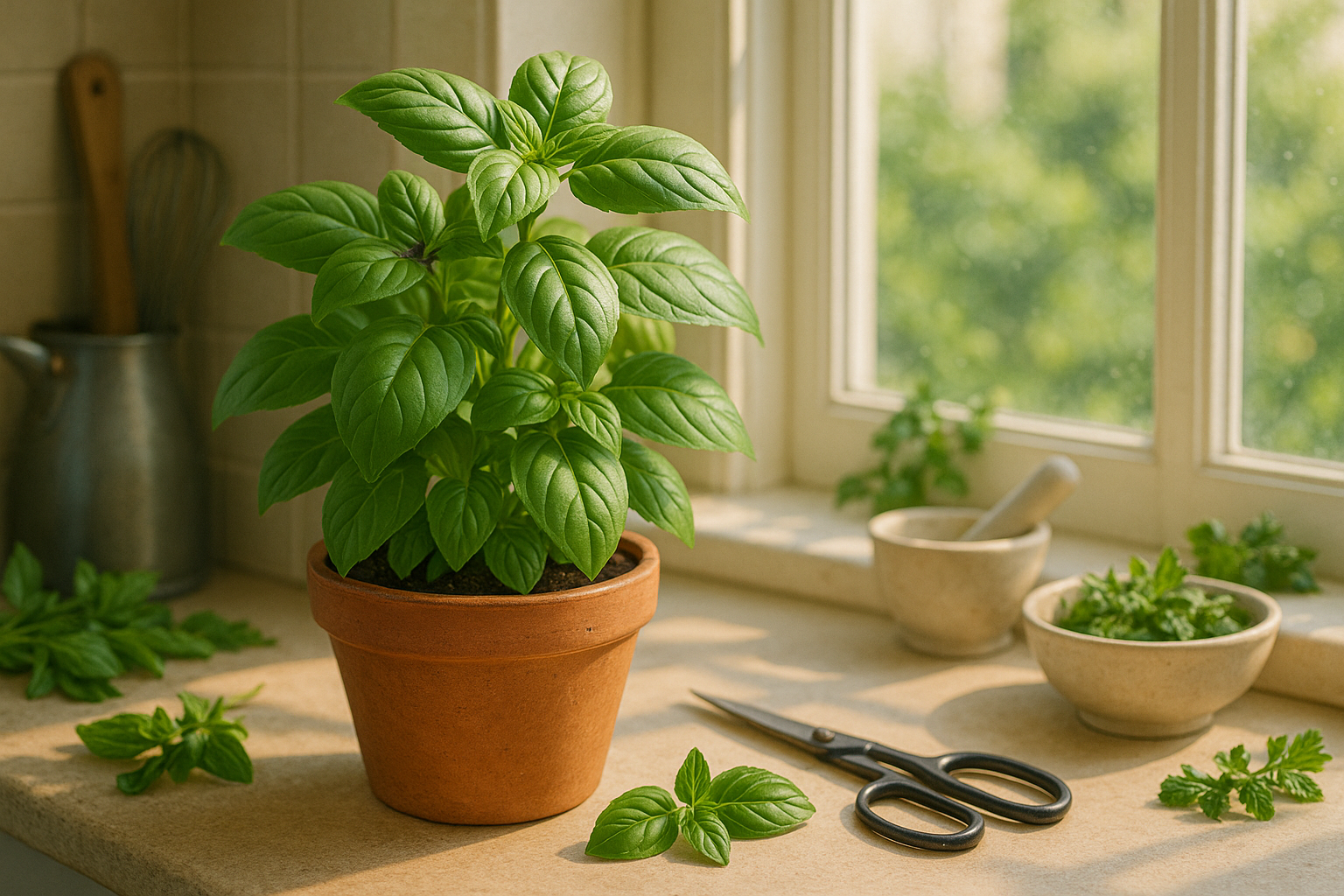Introduction
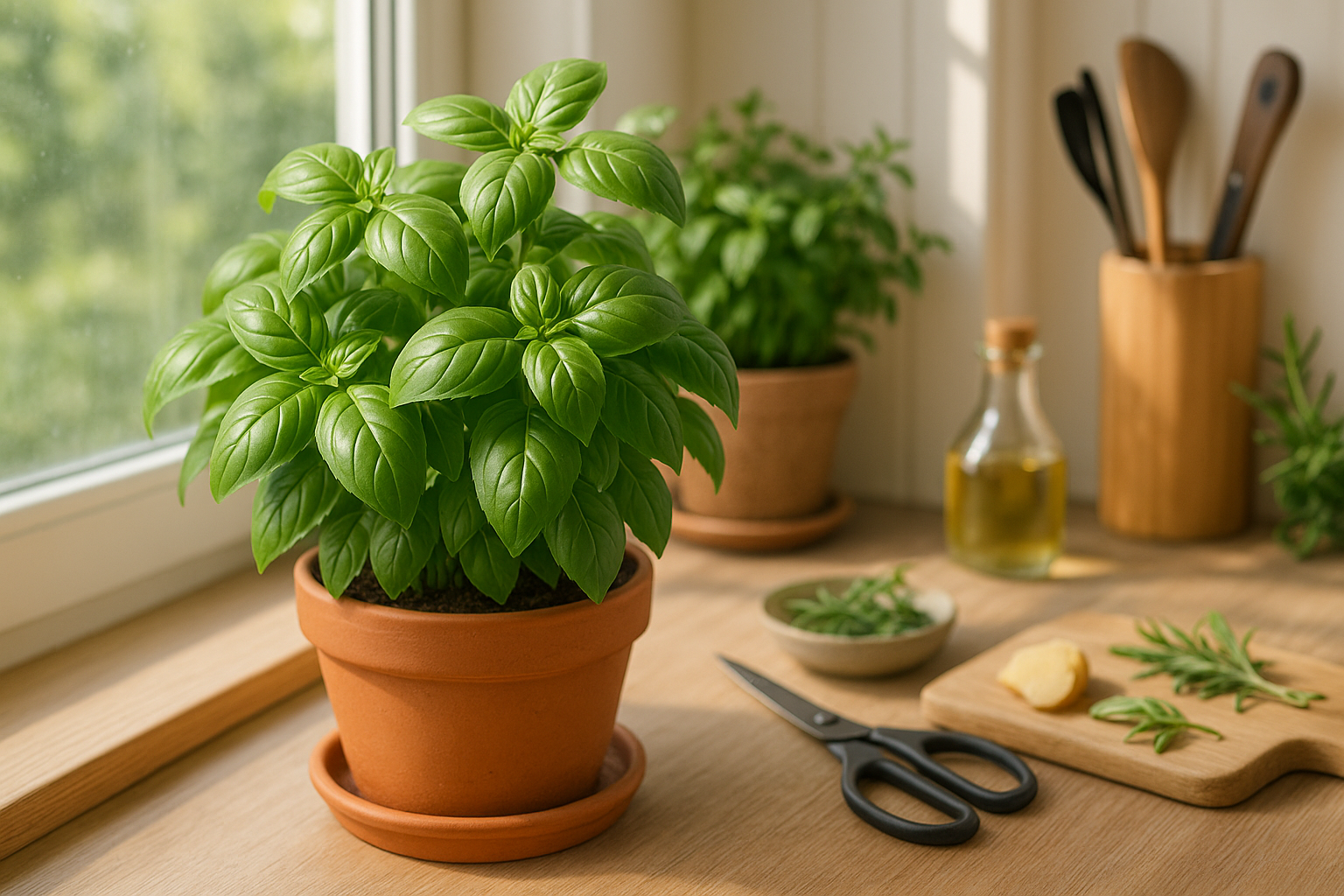
If you’ve ever wondered how to harvest basil without hurting your plant, you’re not alone. Knowing how to harvest basil properly is essential for keeping your plants healthy, lush, and producing flavorful leaves all season long. Basil is one of the most popular kitchen herbs, loved for its fragrant leaves and versatility in everything from pesto to salads.
But for many new gardeners, the fear of accidentally damaging or stunting their basil can hold them back. The good news? Harvesting basil isn’t just easy—it actually encourages your plant to grow even more vigorously when done right.
In this article, we’ll walk you through practical, step-by-step tips to help you pick basil with confidence. You’ll learn exactly where and how to cut, how often to harvest, and how to keep your basil thriving for months. With these simple techniques, you’ll enjoy bountiful basil harvests without ever harming your plants.
Knowing When to Harvest Basil
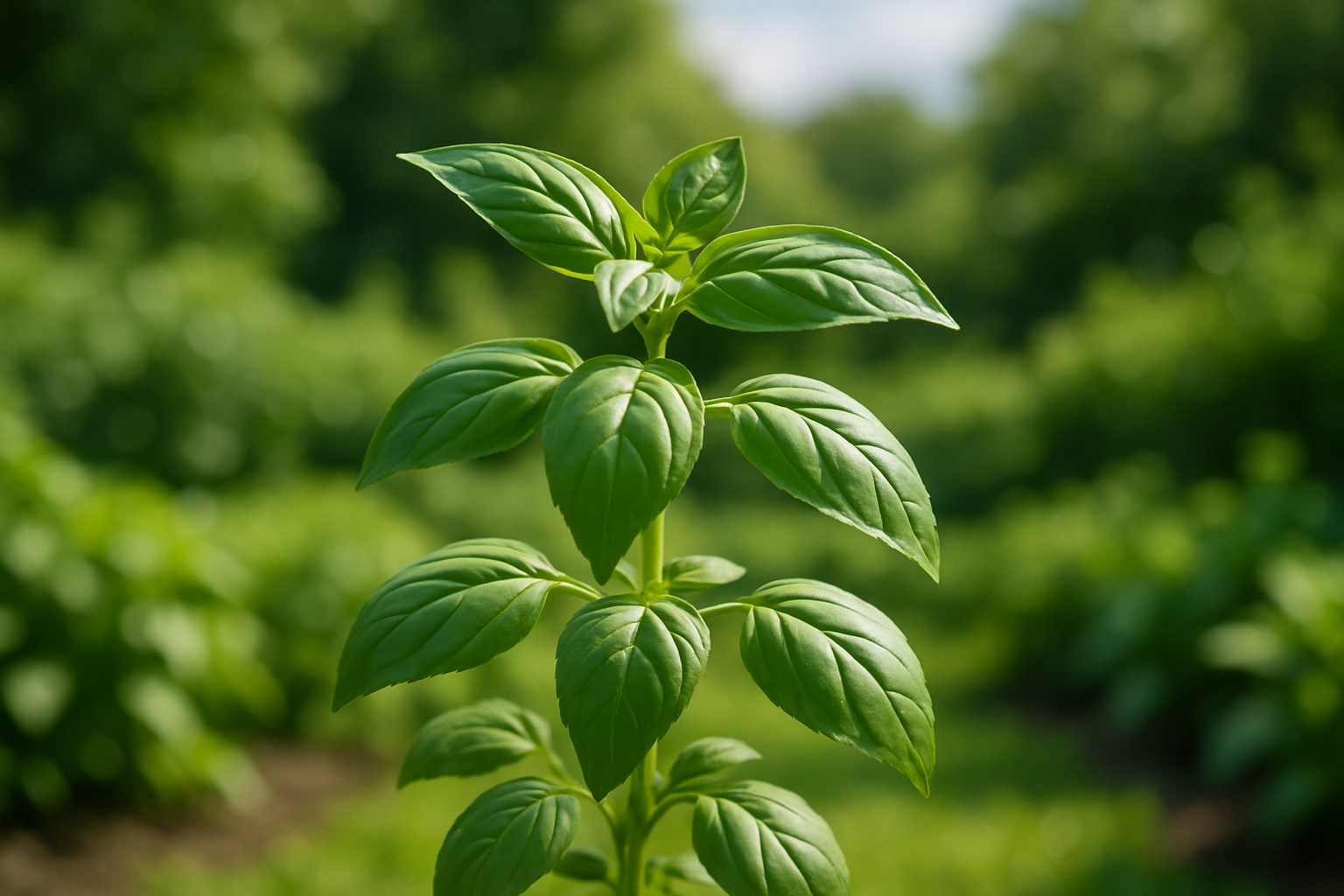
The best time for your first basil harvest is when the plant reaches about 6 to 8 inches tall and has at least six to eight healthy leaves per stem—usually around six weeks after sowing seeds. Look for leaves that are vibrant green and fully expanded; this indicates the plant is mature enough for cutting. Avoid harvesting too early, as young basil needs time to establish a strong root system for continual growth.
For both the first and subsequent harvests, always snip basil just above a pair of leaf nodes (the spot where two little leaves meet the stem). This encourages the plant to branch out and grow bushier. As your basil matures, regular harvesting every one to two weeks promotes lush regrowth and helps delay flowering, which can make the leaves taste bitter.
If you notice small flower buds starting to form at the top, pinch them off immediately. This crucial step prevents premature bolting and keeps your basil producing tender leaves. Don’t be afraid to trim up to a third of the plant at a time during peak growing months, as long as you leave enough foliage for photosynthesis.
Practicing these harvesting habits will give you a supply of fresh, flavorful basil from spring through late summer—and even longer if you keep your plant in a sunny windowsill indoors.
Tools and Preparation for Harvesting
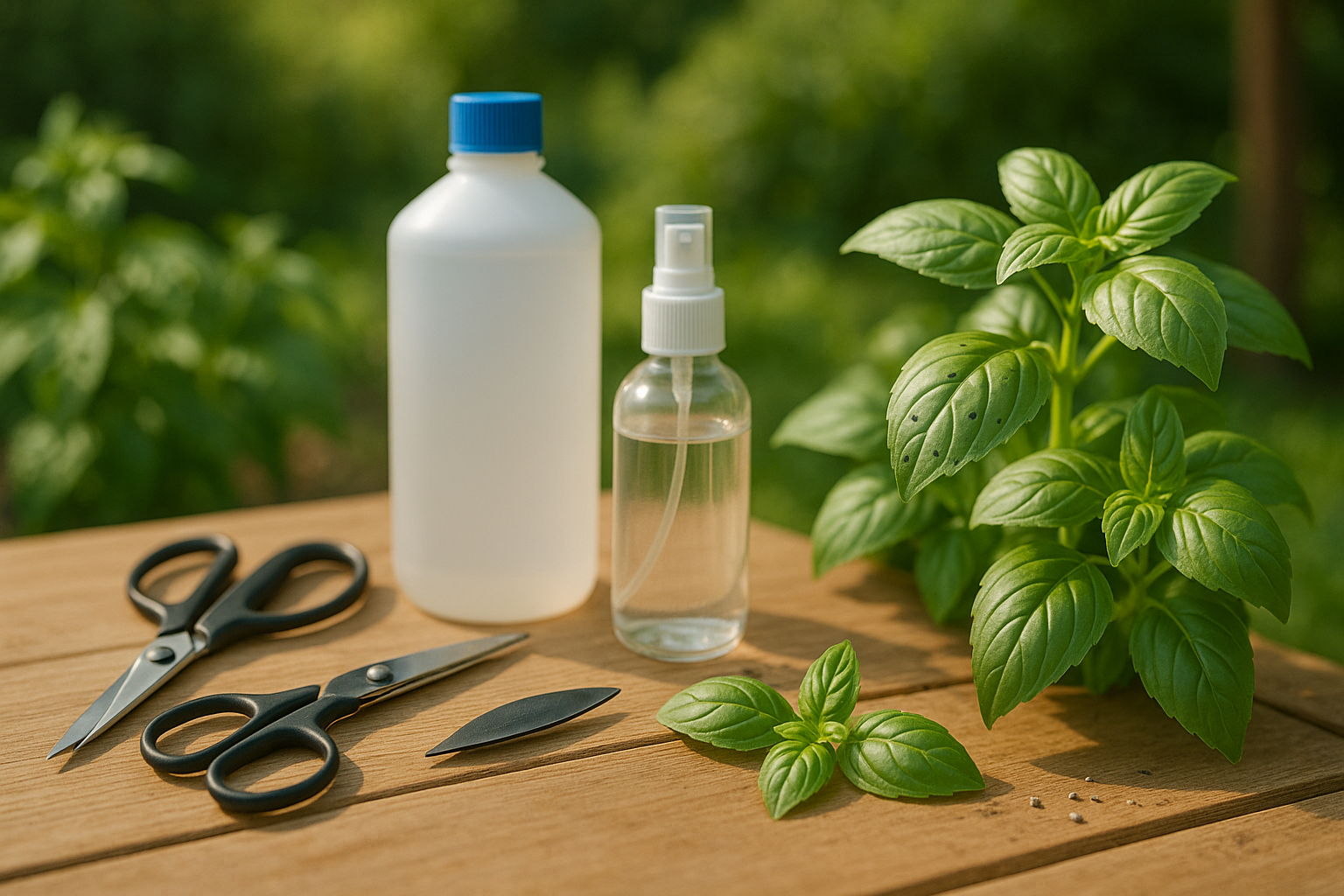
Before harvesting, gather essential tools such as sharp scissors or pruners—these ensure clean cuts that don’t damage the plant. Always clean your tools with rubbing alcohol or soap and water before use to prevent the spread of diseases between plants. Dirty tools can transfer bacteria or fungi that may harm your crop, so a quick wipe-down is worth the effort.
The optimal time to harvest most herbs and vegetables is in the early morning, after the dew has dried but before the sun gets too hot. Morning harvests help lock in flavors and prevent rapid wilting since the plants’ essential oils are at their peak.
Before you begin, take a few minutes to inspect your plants closely. Watch for any signs of pests, such as holes in leaves, webbing, or sticky residue, as well as any yellowed or spotted leaves that might indicate disease. Remove damaged or unhealthy material to avoid contaminating your healthy harvest.
Taking these simple steps ensures a fresher, tastier yield and helps keep your garden thriving all season long.
Step-by-Step
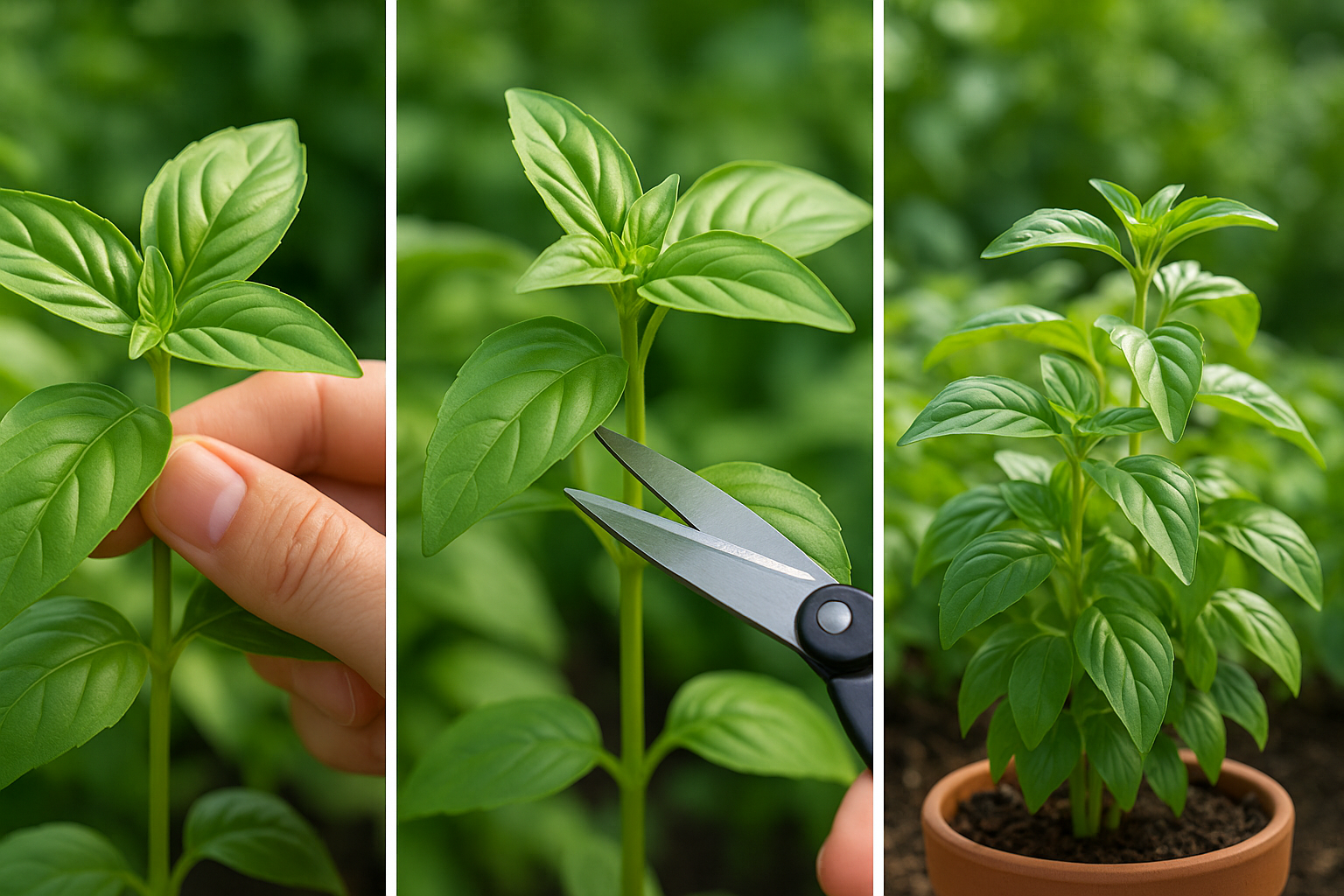
When it’s time to harvest your basil, the key is to encourage healthy, bushy growth by taking only what you need—never stripping the plant bare. Start by identifying a cluster of leaves with a visible pair of small leaves growing from the stem, called a leaf node. Using clean scissors or simply pinching with your fingers, make your cut just above this node.
Harvesting here triggers the plant to send out new shoots from the node, making it fuller and more productive. Always avoid cutting the main central stem near the base, as this can stunt overall growth. Take only the top few inches of the plant, and never remove more than a third of the leaves at once.
For example, if your basil is lush with six or more sets of leaves, feel free to pinch off the top set from several stems rather than stripping one branch bare. Remember to leave plenty of foliage, especially on smaller plants, because the remaining leaves are essential for photosynthesis and overall plant health.
If you’re only using a few leaves for a recipe, opt to take the larger ones from different parts of the plant. For a bigger harvest, space it out over time—weekly pickings are healthier than taking a large harvest all at once.
Avoid cutting right at soil level or removing too many sets of leaves from any single stem, as this weakens the plant and slows regrowth. By following these steps, you’ll keep your basil vibrant, flavorful, and continuously producing throughout the growing season.
What to Do If Basil Starts Flowering
When basil starts to flower, its energy shifts from growing those fragrant, tasty leaves to producing seeds. This can cause the leaves to develop a more bitter flavor and slow down new growth, making it less ideal for cooking.
To keep your basil plant lush and productive, pinch or snip off the flower buds as soon as you spot them. You don’t need fancy tools—just use your fingers or clean scissors to remove flower clusters right above a leaf node, which encourages the plant to focus on leaf production. Check your basil every few days during the warm season, as flower buds can appear quickly in hot, sunny weather.
However, there are times you might want to let your basil flower. If you’d like to collect seeds for next season, let a few healthy plants bloom fully and go to seed. Flowering basil also attracts pollinators like bees and butterflies, which can benefit your whole garden.
Just remember:
- If you want leaves for your kitchen, keep pruning.
- If you want seeds or pollinator help, let nature take its course on a few plants.
How to Store and Preserve Fresh Basil
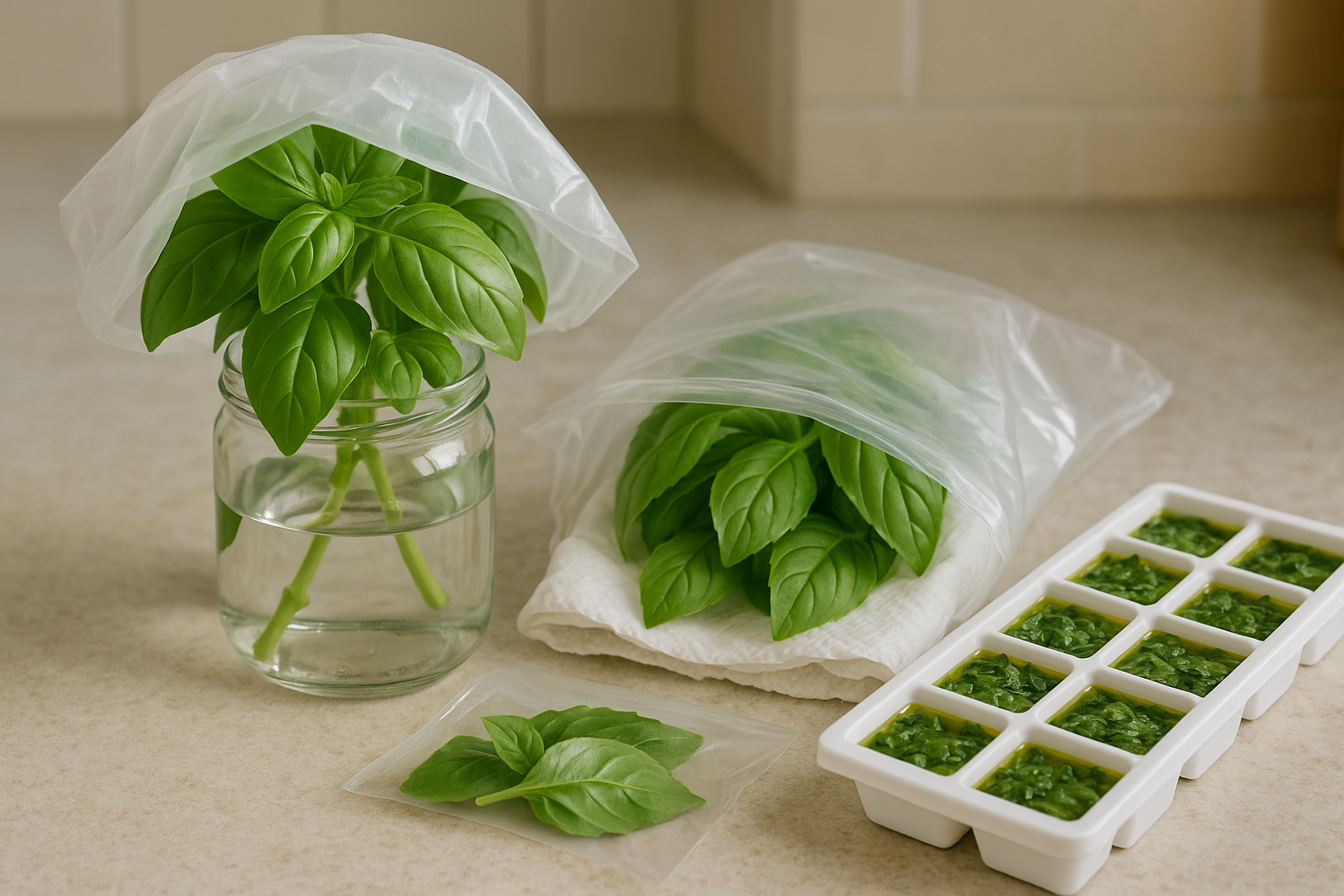
Storing fresh basil properly can make all the difference in preserving its vibrant flavor and color. For short-term storage, the best method is to trim the stems and place the basil in a jar of water like a bouquet, then loosely cover the leaves with a plastic bag. This keeps basil fresh at room temperature for up to a week.
If you need to refrigerate it, wrap the basil gently in a dry paper towel and place it in a sealed plastic bag in the crisper drawer. However, be aware that cold can sometimes darken the leaves.
Freezing is an excellent longer-term preservation option:
- Quickly blanch basil leaves, then pat dry.
- Freeze them in a single layer on a tray before transferring to a freezer-safe container.
- You can also chop basil and freeze it in ice cube trays with a bit of water or olive oil, perfect for tossing into sauces and soups later.
Drying basil is simple—either hang small bunches upside down in a well-ventilated area or use a food dehydrator. Just keep in mind that dried basil has a milder flavor.
For a fresher taste, try making a basil paste by blending leaves with olive oil and freezing the mixture in small portions.
To maintain the best flavor and color, always avoid direct sunlight and excess moisture during storage, and process basil soon after harvest when it’s freshest. These practical techniques keep your basil ready for cooking, whether you’re dashing together a weeknight pasta or preparing homemade pesto.
Encouraging More Growth After Harvest
After harvesting your plants, giving them the right after-care is key to encouraging lush, healthy regrowth. Start by watering thoroughly, but avoid letting the soil stay soggy; most plants prefer soil that’s consistently moist but never waterlogged. Adding a balanced, diluted fertilizer helps replenish essential nutrients lost during harvesting—choose an organic blend or slow-release pellets for gentler feeding during recovery.
Light plays a crucial role too; make sure your plants receive sufficient sunlight or supplemental light indoors, adjusting their position if necessary to prevent stretching and weak growth. Pruning is another essential step after harvesting; trim away straggly stems and faded leaves, but leave plenty of healthy foliage behind. This encourages your plant to focus on producing new, bushy growth at the base rather than becoming tall and leggy.
For herbs, pinch back the tips regularly to promote branching. As your plants recover, keep a close eye out for signs of pests or disease, such as discolored spots or chewed leaves. Early detection and removal—like handpicking pests or removing affected leaves—can prevent bigger problems later. With attentive after-harvest care, you’ll set your garden up for a productive second flush and overall healthier plants.
Conclusion
Harvesting basil regularly is the key to keeping your plant healthy and productive throughout the season. Remember to pinch leaves from the top, cut just above a leaf pair, and avoid taking more than a third of the plant at once. By using these simple techniques, you’ll encourage your basil to grow fuller and produce even more fragrant leaves.
Confident, consistent harvesting not only prevents your plant from flowering too soon but also ensures a steady supply for your kitchen. Start applying these tips, and you’ll enjoy fresh basil whenever you need it, right from your own garden.
